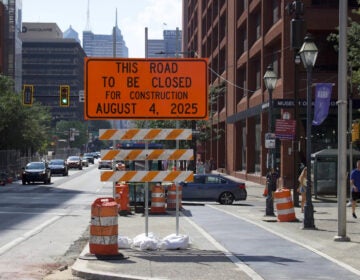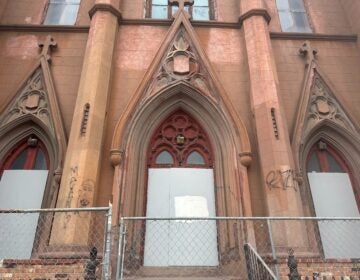DRWC Master Plan work group meets

Jan. 29, 2010
By Kellie Patrick Gates
For PlanPhilly
The group of people who will advise the team devising the Central Delaware Master Plan gathered for the first time Friday to hear from the consultants drafting the plan and to map out about a year’s worth of work.
The Master Plan Working Group now consists of about 35 representatives from key city and state departments, area non-profits, state and local elected officials and community groups. Those include the Commerce Department, the Planning Commission, Parks and Recreation, PennDOT, The William Penn Foundation, SEPTA and the Central Delaware Advisory Group.
Cooper Robertson & Partner’s Randy Morton, project manager for the master plan, told those gathered in the Delaware River Waterfront Corporation’s conference room that the huge project, which will guide development along seven miles of waterfront for decades to come, would be divided into more manageable chunks by category, geography and time.
https://www.youtube.com/watch?v=9sbazi459C4
The work has been split into three over-arching categories, he said: Analysis, concept development, and master plan. The last is basically where the plan itself takes shape. Within all three tasks, the team will study planning issues, economic issues and transportation issues.
The seven-mile stretch has also been divided into four geographical segments: From Allegheny Avenue to Penn Treaty Park. From Penn Treaty to the Ben Franklin Bridge. From the Ben Franklin to Washington Avenue, and then from Washington to Oregon Avenue. “We will be looking at each segment, and each parcel within the segment,” he said. But the team will also look at how the segments fit together and relate to each other.
The team will move through the master planning process on a schedule, Morton said. The first four to five months would be dedicated to analysis. During this time, the team will scour studies that have already been done about the Central Delaware. Sarah Thorp, the DRWC’s master planning manager, asked the Working Group members to give them any information that their organizations have, to save the money and time of redundancy.
The consultant team will also do original research, and study existing conditions at the riverfront and in the city’s zoning code.
The city’s goals for its waterfront, as outlined in the Vision for the Central Delaware – a document put together by PennPraxis after more than a year of public input – is going to guide the master plan, Morton said. But what is learned during the research phase will result in a list of elements to be included in the master plan after meshing the Vision with “the more specific conditions that exist on the ground,” he said. “It’s step one toward a do-able plan.”
“Do-able” is important, because the city doesn’t want this waterfront plan to join the others before it, on some dusty bookshelf where non-implemented plans moulder.
https://www.youtube.com/watch?v=L0XF_qMSPzs
During the next four-to-five month period, the consultants will take those elements – called design principals – and determine where they should be placed in each of the four geographical sections.
“We will meet with groups like yourselves, and among our own and go through a testing process,” he said. That will result in a plan more detailed than the Vision.
The last five to six months will involve combining everything that came before into a single master plan that shows details like what zoning would be required, where the open space is, and where development is.
At the end of each several-month section of work, a large public meeting will be held to provide information about what is happening and seek input. There will be meetings with smaller neighborhood groups monthly. And the team is also depending on the Working Group members to relay information about the plan-in-progress to their organizations and constituents, and bring feedback back to the consultants.
The working group will meet again in a month or so, but Thorp gave them several homework assignments in the meantime. High on the list: Suggesting others who should be part of the Working Group. It is important to have as diverse a group as possible so that the input to the consultants includes many different points of view.
https://www.youtube.com/watch?v=Oz73vgEPOLw
Working Group members tossed out some ideas right away: Someone who could speak for the interests of labor, and someone who is a riverfront property owner.
Thorp asked them to also think about people who could represent the desires of ethnic minority communities that use the waterfront. “Here we are a group without a single African American stakeholder in the room,” she said. “Clearly there’s a demographic that’s not here that needs to be.”
Thorp said that one of the most important parts of the master plan process will be determining what must happen after the document is printed to implement its ideas. The plan, Thorp said, will contain recommendations for zoning and land use and transportation. “In order to implement that document … we need the support of the Planning Commission to adopt it. We will need the city to rezone the waterfront, and that has to be legislated.”
Thorp said the input of Working Group members who are part of city government and agencies throught the process will make that transition easier, since they will be giving guidance all along the way.
DRWC President Tom Corcoran closed the meeting with a nod toward public relations. “We want to build excitement, and a sense of inevitability about this project,” he said.
Corcoran, Cooper Robertson principal Alex Cooper and others have long said the best way to convince the public that big changes can and will happen is to quickly make some little changes.
The Race Street Pier and Pier 53 projects are among those. Cooper said Pier 53 would be open sometime this summer. A design has been chosen, and is now being refined, for the Race Street Pier, which should open not long after, in summer or fall.
Design work is also beginning on the Race Street Connector project, which aims to create a more beautiful gateway to the pier, with better and more obvious access for pedestrians and cyclists.
Speaking of pedestrians and cyclists, a temporary multi-purpose trail along the southern end of the plan area was expected to be open by now as the first of the “early action” items. It was built by the Center City District, and people are using it. But the official opening has been delayed while the DRWC continues to work on right-of-way issues with two property owners.
Corcoran said an official agreement is near, and their should be a grand trail opening this spring.
https://www.youtube.com/watch?v=IgSIl4oPHA0
Contact the reporter at kelliespatrick@gmail.com
WHYY is your source for fact-based, in-depth journalism and information. As a nonprofit organization, we rely on financial support from readers like you. Please give today.





